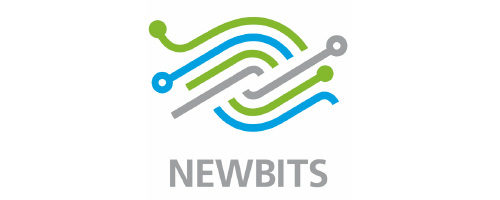The overall objective of the NEWBITS project is to provide a deep understanding of the changing conditions and dynamics that affect and/or influence C-ITS innovations.
In order to achieve the project’s overall goal, the following specific objectives have been set:
The application of a business ecosystem’s concept for C-ITS intends to acknowledge this context by introducing a higher conceptual level than that of individual organisations, focusing at how organisations create value within the context of the networks in which they interoperate. In NEWBITS, this conceptualization pivots upon 3 inter-related elements:
- 4 case studies pre-selected at proposal stage as representative of key ITS and C-ITS business area and linked to implemented or on-going projects and initiatives.
- Communities of Interest (CoI), involving actors of the business ecosystem of each case study.
- NEWBITS Networking Platform (NNP) set to deliver project outcomes and support CoI operation according to the project method.
NEWBITS will deploy a significant effort in analysing the case studies at several levels in order to come up with relevant information about their taxonomy, business ecosystem aspects (actors, relations between actors, performance, dynamics and strategies) and detection of core processes that support value creation and distribution. This business ecosystem oriented approach is envisaged to facilitate and maximize the proposed methodology for business modelling.
[1] Iansiti, Marco (2005). Managing the Ecosystem. Optimizemag; Business Leadership ABI/INFORM, February 2005.
In the framework of the case studies, NEWBITS will implement a holistic market-demand-supply intelligence process which will prioritize the identification of C-ITS enablers and barriers (i.e. infrastructure investment, data access), while mapping the C-ITS ecosystem and identifying the needs and inter-relations of its actors. NEWBITS project will investigate existing KPIs as well as solutions addressing the effectiveness of C-ITS and recommend as necessary new ones for an enhanced deployment. NEWBITS will take inspiration from existing approaches to mitigate the last mover advantage tendency and innovative business models in business ecosystems other than C-ITS. The consortium will also deploy a collective intelligence framework that will focus on generating innovative approaches by involving key stakeholders and users relevant in the C-ITS sector. Though primarily focused at EU context, the mapping and assessment activity will also gather information from the US.
VNA will pivot upon the pre-selected case studies to canalize the process of business modelling. Furthermore, the NEWBITS Network Platform (NNP) will be configured and operated, supported by the concept of Communities of Interest to market (CoI) so to support the diverse stages of VNA such as: defining the network objectives, identifying and defining network participants and value dimensions of the network participants. The critical process of Value flow definition and crafting value propositions will be particularly implemented in a specific project task. The application of the VNA method will generate two key outcomes: new business models developed from a network perspective; and valuable information regarding value creating interactions within C-ITS business ecosystems.
NEWBITS will generate valuable know-how about (C-) ITS deployment pathways, innovation diffusion and C-ITS value networks that should reach private and public stakeholders at operative and policy making level. The results extracted from the case studies will be generalized following NEWBITS method in order to present a more general conclusion on C-ITS business ecosystems.
